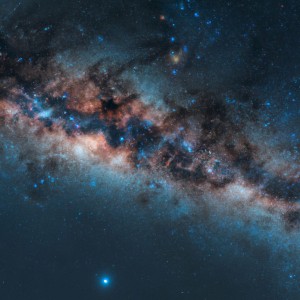Where do Lost Matters in the Universe Go?
The universe is a vast and mysterious place, and it is full of wonders that never cease to amaze us. However, one question that has puzzled scientists for years is: where do lost matters in the universe go? In this article, we will delve deeper into this mystery and explore some possible explanations for it.

First and foremost, what do we mean by "lost matters"? Essentially, these are particles or objects that appear to have vanished into thin air, but in reality, they have just been displaced or hidden from our view. For example, when a star explodes in a supernova, it releases a large amount of matter into space. While most of this matter will eventually coalesce into new stars or planets, some of it may get ejected out of the galaxy or absorbed by black holes, making it difficult to detect or study.
To better understand this concept, we need to take a closer look at the different types of matter in the universe. According to current theories, the universe consists of three main components: ordinary matter, dark matter, and dark energy. Ordinary matter is what we see and interact with every day, including atoms, molecules, planets, and stars. Dark matter, on the other hand, is composed of enigmatic particles that do not interact with normal matter, except through gravity. It makes up about 26% of the total mass-energy of the universe but is mostly invisible since it does not emit, absorb, or reflect light. Finally, dark energy is a mysterious force that pervades space and drives the accelerated expansion of the universe. It accounts for about 70% of the cosmic budget but is even more elusive than dark matter.
Now, back to our original question: where do lost matters in the universe go? One possibility is that they end up in intergalactic space, the vast regions of vacuum between galaxies. Here, the matter may be spread out thinly but can still be detected using advanced telescopes. Scientists have already observed a diffuse gas in intergalactic space called the intergalactic medium (IGM), which is thought to contain up to 30% of all baryonic matter (i.e., matter composed of protons and neutrons) in the universe. The rest of the baryonic matter is believed to reside in galaxies as stars, gas, and dust. However, the IGM is not an efficient sink for lost matter since it is constantly being enriched by galactic winds, supernovae, and other cosmic explosions.
Another possibility is that lost matter is being trapped by black holes, the ultra-compact objects that form when massive stars collapse in on themselves. Black holes are known for their powerful gravitational pull, which can suck in anything that comes too close, including light. A supermassive black hole at the center of a galaxy can trap a significant amount of matter from its surrounding region, forming an accretion disk that glows brightly in X-rays and other energetic wavelengths. However, not all lost matter will end up in black holes, especially if they are moving too fast or too far away. Moreover, once matter is trapped by a black hole, it may be converted into energy or ejected out as relativistic jets, making it hard to trace.
A third possibility is that lost matter is being converted into dark matter or dark energy through some unknown physical process. This idea is based on the fact that the total amount of matter and energy in the universe is not conserved, but rather, changes over time due to the expansion of space. If some of the lost matter is being transformed into dark matter or dark energy, it could explain why we cannot detect it with our current instruments. Furthermore, some models of particle physics suggest that ordinary matter can decay into dark matter particles, which could provide a mechanism for converting lost matter into an invisible form.
In conclusion, the question of where lost matters in the universe go is still an open one, and scientists are actively researching this topic using a variety of observational and theoretical methods. It is possible that lost matter is simply hiding in intergalactic space, trapped by black holes, or being converted into dark matter or dark energy. Or maybe, there is some other explanation that we have not yet considered. Whatever the answer may be, it is sure to deepen our understanding of the universe and the nature of matter itself.













评论